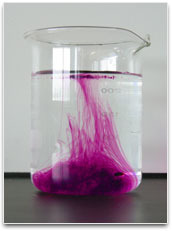Potassium Permanganate
Potassium Permanganate is a crystalline compound that is dark purple in color and is used in deodorizers, dyes, disinfectants, and as an oxidizing agent. The chemical formula for potassium permanganate is KmnO4 and it is considered to be an inorganic compound. When dissolved in water, the compound makes the solution turn an intense purple color and creates a purplish-black crystal when evaporated.
What Uses Does Potassium Permanganate Have?
Potassium permanganate is primarily used for its oxidizing properties in industry. Since it does not generate any toxic byproducts, the compound has found a number of uses over the years. The film industry uses potassium permanganate to make props and set items look old and is commonly used on timber, glass, ropes, and cloth. Some of the more famous movies that used the compound to age stage equipment include “Indiana Jones,” “Troy,” and “300.” The compound has also been used as an antiseptic to treat ulcers, hand or feet fungal infections, and dermatitis. The compound is also used as a drinking water disinfectant and to remove the sulfur smell from rural drinking water. More modern uses include aiding in Zebra mussel control in fresh water treatment systems, synthesizing various acids, fruit preservation, as a fire starter in survival kits, and as a specialized disinfectant for animal and human treatments.
How Should Potassium Permanganate Exposure Be Handled?
Proper protective gear such as gloves and goggles should be worn when handling the substance. Potassium permanganate will rapidly stain your skin, clothing, or paper if it comes in direct contact with these surfaces unintentionally. Lemon juice has been found to be able to remove the discoloration from paper. It should also be kept away from other substances that can oxidize or it can result in combustion. If a person is exposed to the substance, he or she should be removed to fresh air immediately and given artificial respiration if they are not breathing. If it has been ingested, the person should be given large amounts of water if they are conscious and vomiting should not be induced. If the skin has been exposed, the area of exposure should be flushed with water for at least 15 minutes and the contaminated clothing removed. If the eyes have been exposed to potassium permanganate, then they should be flushed for at least 15 minutes and the upper and lower eyelids should be lifted sporadically during the water flush. In all cases of exposure, immediate medical attention should be sought for the individual.


Comments - No Responses to “Potassium Permanganate”
Sorry but comments are closed at this time.